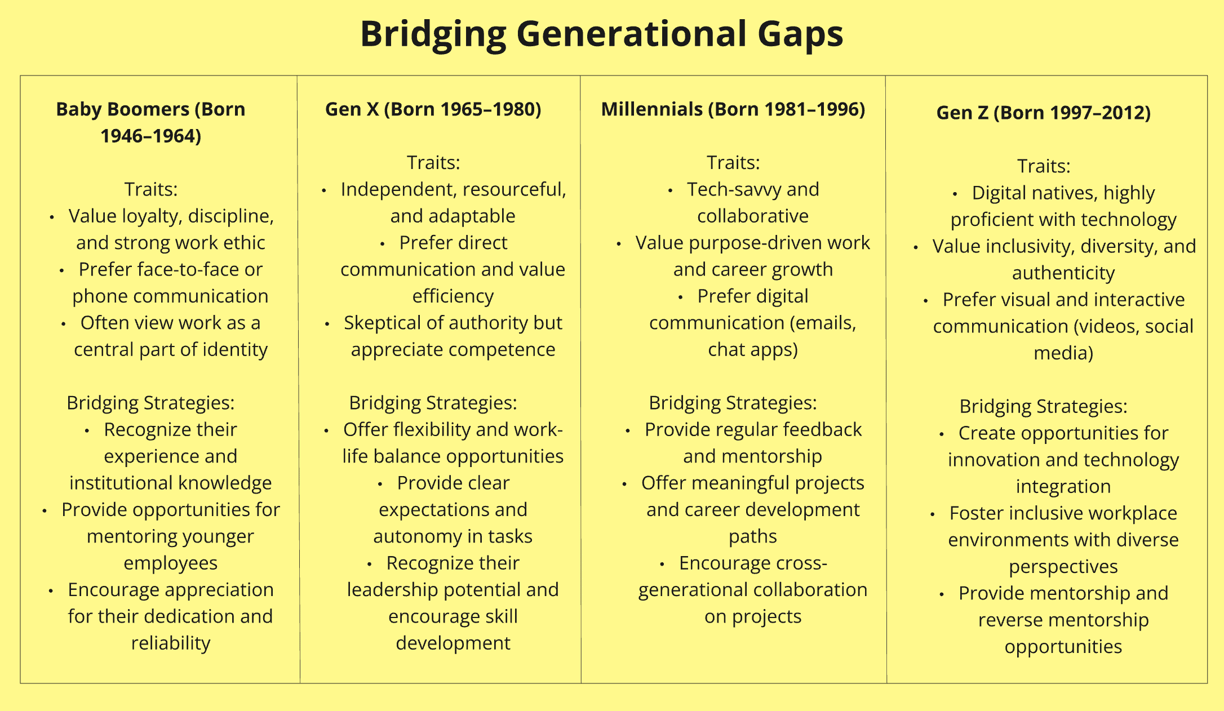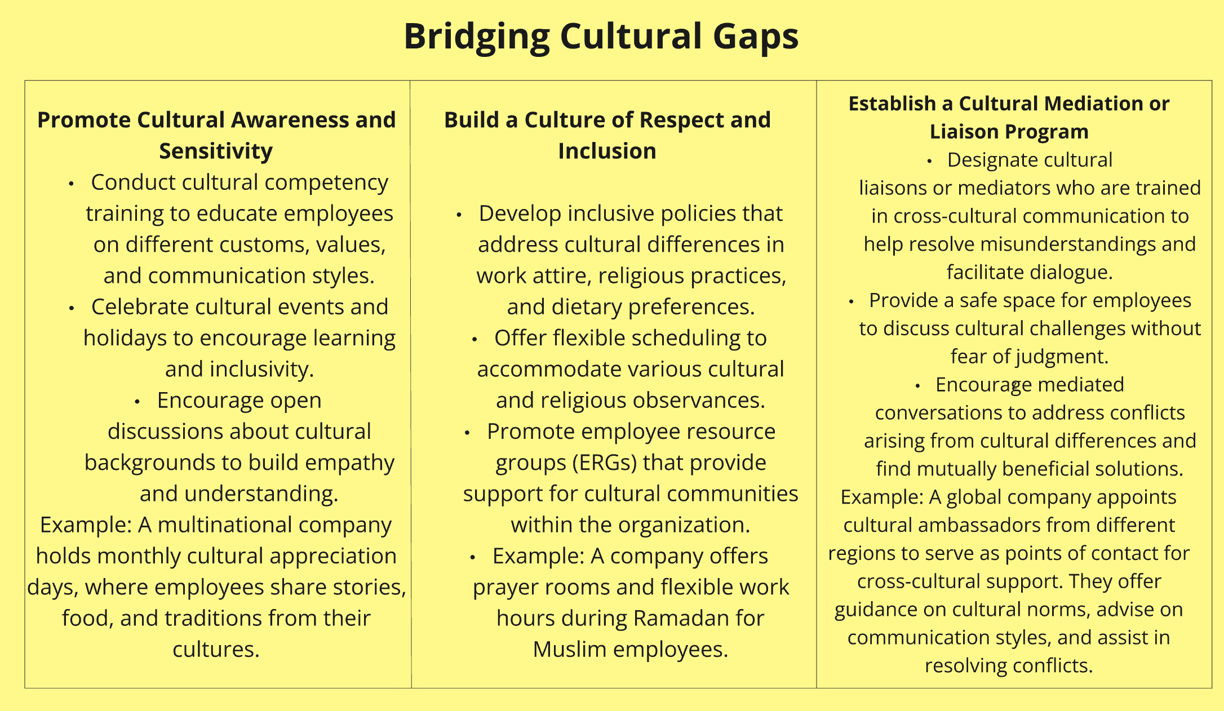
The Future of Work
Explore our team's values and innovative research methodologies in action.


Cross-Generational Collaboration in the Future of Work
Older workers may be unfairly viewed as less adaptable or less technologically skilled. They may be excluded from opportunities and have difficulty maintaining engagement from younger generations. Older women in particular, face compounded challenges due to both age and gender biases. Therefore, inclusive policies must be created to address these issues, fostering mutual respect across age groups, and providing up-skilling opportunities to ensure older employees feel valued and supported (Wu, O’Dare and Greene, 2025).
Significance for the Future of Work: As workforce demographics continue to diversify, addressing ageism and fostering intergenerational collaboration will be critical. Organizations that implement inclusive policies and encourage knowledge sharing across generations will not only enhance employee satisfaction but also drive innovation and long-term success (Wu, O’Dare and Greene, 2025).


Ageism
As older employees retire, valuable expertise may be at risk of being lost. Therefore, it is important to foster a culture that encourages knowledge sharing. Strategies in generational diversity and knowledge management could be effective in intergenerational knowledge transfer, thereby retaining expertise when older employees pass the torch (Schmidt and Muehlfeld, 2017).
Significance for the Future of Work: As the workforce becomes more age-diverse, organizations that prioritize intergenerational knowledge transfer will be better equipped to maintain continuity, foster innovation, and adapt to changing market demands. This will be crucial for building resilient and future-ready workplaces (Schmidt and Muehlfeld, 2017).


Knowledge, Disciplines, and Expertise
Generational conflicts in the workplace arise from differing values and behaviors. Tensions may arise when employees of different generations don't feel respected or valued, often due to stereotypes. (i.e. younger workers may view older colleagues as resistant to change, while older workers might see younger ones as inexperienced or entitled.). Workplaces with a strong culture of mutual respect and collaboration significantly reduce these conflicts. (Chen et al., 2024).
Significance for the Future of Work: As workplaces become increasingly diverse, understanding and managing generational conflicts will be crucial for fostering collaboration and innovation. By fostering an environment where employees of all ages feel understood and included, organizations can turn potential tensions into opportunities for learning and teamwork. This is crucial for maintaining harmony and productivity in diverse teams.This will be especially important as younger generations enter the workforce with distinct expectations and values (Chen et al., 2024).


Conflicting Generational Values


Cross-Cultural Communication in the Future of Work
WHAT: Cross-cultural communication refers to the process of exchanging information and ideas between individuals from different cultural backgrounds. It involves understanding differences in:
Language and non-verbal cues
Work ethics and values
Decision-making processes
Leadership styles
WHY: Boosts Collaboration & Innovation
Diverse teams bring different perspectives and problem-solving approaches, leading to higher creativity and more effective decision-making.
Enhances Employee Satisfaction & Inclusion
When employees feel their culture is valued, they are more engaged and motivated to contribute.
Prevents Miscommunication & Conflict
Many workplace conflicts arise from cultural misunderstandings. Recognizing differences in communication styleshelps avoid misinterpretations.
Improves Global Business Success
Companies operating internationally need culturally competent teams to successfully navigate foreign markets and partnerships.


1. Language Barriers
Even when people speak a common language (e.g., English), differences in slang, idioms, and accents can lead to misunderstandings.
2. Non-Verbal Communication Differences
In some cultures, direct eye contact is seen as a sign of confidence, while in others, it may be considered disrespectful.
Gestures and body language vary greatly. For example, a thumbs-up may be positive in one country but offensive in another.
3. Different Work Ethics & Hierarchies
Some cultures prioritize individual achievement, while others emphasize teamwork and collective success.
In some regions, hierarchical work structures are the norm, whereas in others, flat organizational structures are preferred.
4. Time Perception
Western cultures often adhere to strict schedules ("time is money").
Some cultures value flexible, relationship-driven time management, prioritizing personal interactions over deadlines.


Challenges


